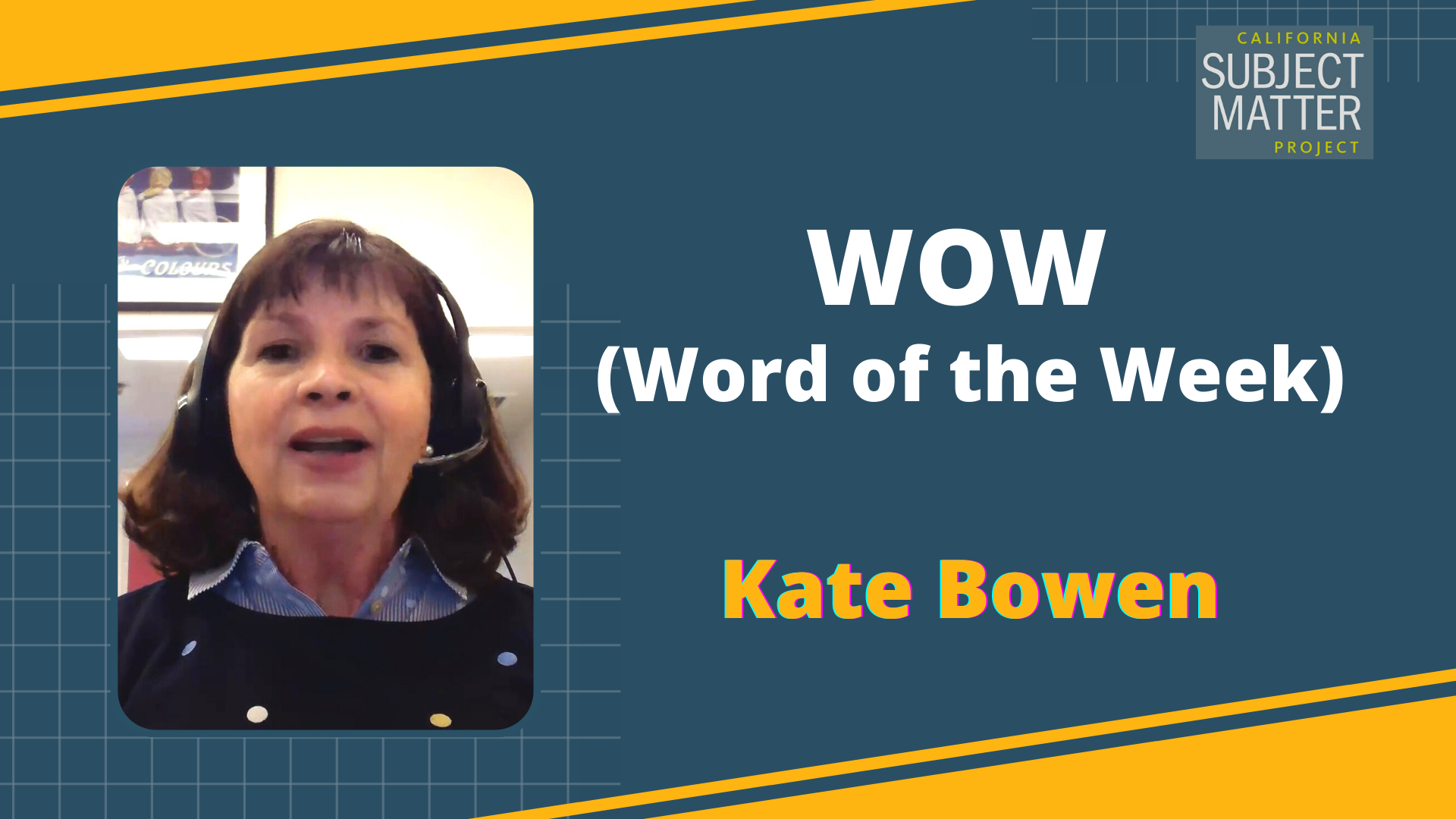Watch the Video
Presenter
Judy Garey is a Professor Emerita, Author at Ventura College College District in Ventura, California.
Transcript
Hi, my name is Judy Garey, I have spent my teaching career as a theater professor at Ventura College in Ventura, California. Through my association with the South Coast Writing Project and collaboration with English teachers, I have come to realize how valuable the reading and thinking strategies we use in theater can be to the English Language Arts classroom.
Today we’re going to look at one of those reading strategies. It is most appropriate for middle school and high school students, and based on the strategy that actors use to bring characters to life for the stage. You’ll need a piece of literature and you will ask your students to read as actors. Now, students will generally perk up when you say that because they all think they will become stars.
Tell students that actors must read in a very unique way in order to understand literature well enough to put it on the stage. They don’t just read text, they interact with it. There are two steps to this reading strategy. I am going to use the short poem “Oranges” by Gary Soto to show you how it works.
You can use this poem, or any other literature your students are working with. The actor’s first step is to search the text for and record all evidence of character that the writer has supplied. Here is an example of how a student collected character evidence by writing directly on the text, identifying information about the characters and oranges. Notice how specific the detail is that the reader finds supplied by the writer. Students can take notes directly on the text like this, or they can take notes by hand or on an electronic device.
Tell students that now they have finished this first step they are not finished. Now they must delve more deeply into the text, use the character information they have identified, interact with it, make inferences and draw conclusions from it. Through this process, they make abstract characters visible and concrete.
The actor’s second step is to write a biography of each character. A biography is a written account of a character’s life. It begins with the character’s date and place of birth, and includes all the events that have shaped the character into the person we meet in the story. It provides a challenging writing assignment asking students to revisit the text, draw inferences, and make conclusions from it. Here is an example of a middle schooler’s biography of the character of Roger from Langston Hughes’ short story, “Thank you Ma’am.” Notice how the students started with evidence from the text and made inferences from that evidence to create a biography that justifies the character’s personality and actions.
So these are the two steps of the actor’s reading process. One, searching for and recording all evidence of character supplied by the writer in the text; and, two, generating character biographies. These two steps ask readers to closely examine a text for information the writer has included, and then interact with it, create logical and imaginative inferences and draw reasonable conclusions. All, by the way, essential elements of the common core goals in both reading and writing.
I hope these steps of reading like an actor have been helpful to you, and thank you for letting me share some of my thoughts today on the important connection between theater and English language arts.
Accompanying Materials & Resources
- Quick Guide: Reading Like an Actor (PDF – 1 Page)
- Reading Like an Actor Simplified PP Slides (Google Slide)
- Reading Like an Actor Simplified How To (Google Doc)
- Reading Like an Actor Simplified How To (PDF)
- Reading Like an Actor Oranges-Gary Soto-2017 (PDF)
- Reading Like an Actor Student Sample 01 (PDF)
- Reading Like an Actor Student Sample 02 (PDF)



